Strangest sports: Top 10 weirdest sports in the world currently
Other Sports
Learning about different swimming strokes is essential because each one offers additional benefits in various conditions, whether you want to learn to swim for competition, exercise, or safety. These four competitive swimming strokes are essentially the ones most instructors teach about.

Once you learn of the butterfly, backstroke, breaststroke, and freestyle, you will realise that it is just a test of one's speed, endurance, strength, and skills. This article will show you the proper technique for each swimming stroke and how to perform them like a pro.
After an in-depth analysis, Sports Brief came up with a list detailing the 4 basic swimming strokes at least everyone should learn about. And while swimming is no longer for leisure, people are now taking the initiative of learning these different techniques for safety purposes. Here are the most popular swimming strokes and kicks every person should learn.
Strangest sports: Top 10 weirdest sports in the world currently
Other Sports
This is by far the most challenging and complex swimming stroke to learn. Mastering can be more demanding and exhausting, but it is fun and offers a great workout. It is the second-fastest competitive stroke and Michael Phelps' go-to move in the Olympics.
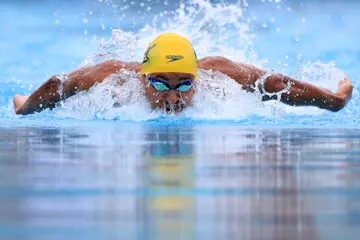
Body position: Your head should be in a neutral position, and you want your hips to be high in the water. This establishes the ideal baseline for your stroke to begin with.
The Butterfly pull: You want your hands to move simultaneously. When you start to pull, keep your elbows nice and high the entire time. This technique is known as an early vertical forearm, and it essentially transforms your hand, wrist, and forearm into one large paddle that can pull a lot of water.
Out-of-water recovery: Keep your hands and arms loose and close to the water's surface as you sweep your arms widely and circle back to where you started.
Which are the most popular sports for girls? An informative list
Other Sports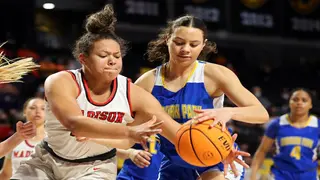
The Kick: So many athletes struggle to get their kick timing right in butterfly, so pay close attention. To maximize your kick and establish the best rhythm for your stroke, keep your legs close together and your toes pointed forward when you kick in the butterfly stroke.
Consider butterfly as having two essential kicks: the first kick aids in lifting your arms out of the water during recovery, and the second kick keeps you moving as your hands dive in front of you to begin your pull. Kick both up and down.
Breathing: Right after you catch, raise your head, and as your arms extend in front of you, lower it again to take a breath. When breathing, try not to raise your head excessively. Just raise your head high enough to take a quick breath, then lower it again so your chin lightly touches the water's surface.
Which are some of the most common injuries in basketball?
NBA
To ensure your body receives a steady flow of air and does not tire out more quickly, choose a breathing pattern and stick with it.
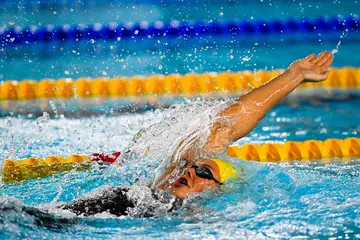
Next, the only stroke not done facing down. Being able to see where you are going is much more difficult, but it is the best option for anyone who wants to avoid putting their face in the water. Due to the beneficial back workout it offers, doctors frequently suggest this stroke to patients with back problems.
Body position: Avoid looking at your toes; keep that neck neutral and look at the sky. Your hips should float up close to the surface of the water.
The Backstroke pull: The backstroke pull is slightly different; your arm will come out of the water thumb first. To lessen the drag that your shoulders build, rotate your body away from the lifted arm as you lift it.
NFL waterboy application: How to become a waterboy in the NFL
NFL
Then, ensure your hand re-enters the water pinky first and rotates towards that arm. This hand position will make your forearm catch solid and early.
The Kick: Backstroke kick is a flutter kick. Do not kick too hard here. Wider kicks produce more drag. Try to keep your kick's width to no more than 18 inches. Additionally, you should drive your kick from your hips rather than your knees, keep your toes pointed, and keep your legs comparatively straight with just a little bend at your knee.
Rotation: If your kick is powerful, you should be able to propel your rotation during the backstroke with your hips; if not, try propelling your rotation with your shoulders but be careful not to over-rotate.
Swimming straight tip: Find something overhead to focus on, such as a seam in the ceiling, if you have trouble swimming straight in the backstroke. (If you are outside, look for something to help you stay on course). Last but not least, try to avoid moving your head too much.
What is the easiest sport to play right now and why is it the easiest?
Other Sports
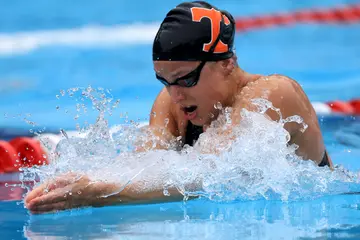
As the slowest competitive swimming stroke, the breaststroke is also the most frequently learned. Since it does not necessitate submerging your head, it is commonly taught to beginning swimmers.
It is all about timing and power with this quick axis stroke. Breaststroke can be broken into four steps; pull, breath, kick, and glide. You want to build each stroke in that order but first, the body positioning.
Body position: Every stroke in the breaststroke begins and ends with a brief streamline. Your stroke will be more effective the quicker you can return to a streamline.
Pull: From a streamlined position, spread your hands apart with your pinkies up. When your arms are wider than shoulder width, pull back with that high elbow, early vertical forearm catch.
Breath: You will lift your head to breathe; when you lower it again, your arm should fly forward.
Ranked! Top 10 most dangerous sports to play at the moment
Other Sports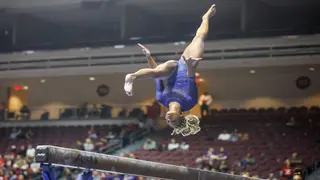
Kick: Perfecting the breaststroke's distinctive frog-like kick may take some practice. However, the fundamental components of the breaststroke kick are up, out, around, and together. Start by flexing your feet and pulling your heels behind before kicking out. After moving your legs while keeping them flexed, squeeze them back together to achieve the streamlined position.
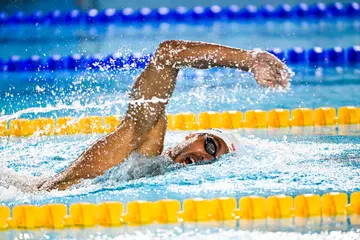
Freestyle, also called front crawl, is the quickest and most effective swimming stroke for competition. Most athletes use this stroke because it is the fastest in freestyle events, hence the name freestyle stroke.
Body position: If your head is too high, your hips are more likely to drop and pull you down. You want your hips to be high in the water and your head neutral.
Freestyle pull: The Freestyle pull revolves around striking a balance between being relaxed and powerful. Your fingertips should dip into the water at a 45-degree angle, middle finger first, about 18 inches in front of your shoulder.
Different dart games: A list of different types of dart games to play with your friends
Other Sports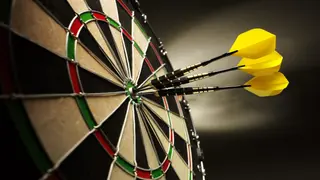
Add a long-reaching extension through your shoulder and arm after your hand entry. Continue to look down as your chest will open to the side once your shoulder is fully extended. When your arm is fully extended, bend it at the elbow, pointing your fingertips toward the water's surface as you pull back straight.
Rotation: Freestyle requires some rotation, much like backstroke does. Rather than leading your rotation by twisting your shoulders, concentrate on engaging your core and starting from the hips; your shoulders will follow.
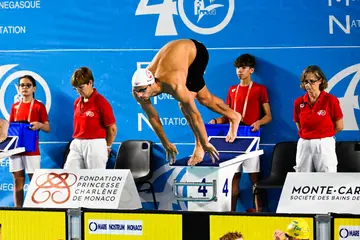
Breathing: You must maintain a neutral head position when breathing in freestyle. You'll feel your body swaying to one side as you take a stroke. Now is the time to turn your head to the opposite side to get some air if needed. Quickly inhale and return your head to neutral before your subsequent stroke.
Freestyle kick: Keep it simple with your kick; focus on a quick, slight hip kick, avoid kicking wider than 18 inches, and avoid bending your knees excessively.
Tennis shot types: Which are the different types of shots in tennis?
Tennis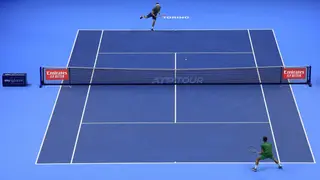
These swimming strokes provide full-body workouts, so understanding all these strokes will allow you to challenge your muscles in new ways while working every muscle in your body. Swimmers who practice every stroke develop robust, injury-resistant bodies and become significantly more physically fit.
READ ALSO: Who is the best gymnast in the world? A top 10 ranked list
Sports Brief compiled a list ranking the top 10 best gymnasts in the world. The sport is more challenging than it may seem since it requires a lot of precision, coordination, and flexibility.
Globally, the sport is dominated by women who have worked hard enough and proved that they deserve the recognition and spotlight. Click on the link above to find more details about the best gymnasts in the world.